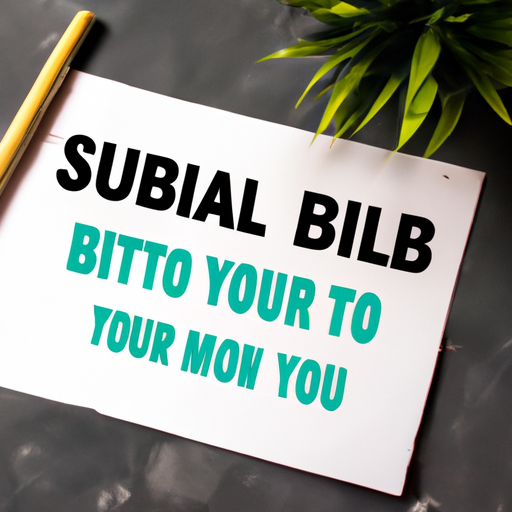Conversational Emails That Feel Like One-on-One Messages
Welcome to the world of chatting, where each word matters but the tone matters even more. From emojis to GIFs, communication is becoming more informal day by day. Still, when we take a trip down to our email inbox, it can feel like we’re walking straight into a corporate boardroom. Our digital person suits up, and we dive into depths of formality achievable only by the likes of Shakespeare. But does it really have to be like that? Let’s shuffle things around, break the monotony, and inject some fun into these conversations!
We’re going to chat about how to make our emails more conversational – like you’re talking to your BFF at your favorite coffee joint. So, get ready to spill the beans (or tea, if that’s more your jam).
Include a warm greeting
Before you start your email convo, inject some warmth right from the get-go. Let the recipient know that they matter. A simple “How’s it going, [Name]?” can immediately set a more relaxed tone.
Befriend the mighty words
Replacing the ‘professional’ words with everyday language can give your emails a crazy lift. Swap “I am currently engaging in” to simply “I’m doing“. Easy peasy lemon squeezy! Who needs a thesaurus when you’ve got street smarts?
Make it personal
Using your recipient’s name throughout your email can make the exchange feel more personal. Just don’t go overboard or it might sound like a broken record.
Be playful with emojis and GIFs
Emojis and GIFs are the spice to the dish that is your email. They can convey emotions and tone in a heartbeat. A wink emoji 😉 or a thumbs-up 👍🏼 sprinkled here and there can be pretty damn nifty!
Keep it casual, but professional
Just because your email is informal, it doesn’t mean it can’t be professional. Striking the right balance is like walking a tightrope. Use a casual tone, but avoid slang and jargon that’ll make your email read like a text to your college roommate.
Sign off on a light note
The last sip of coffee often leaves a longing for another cup. Make sure your sign-off leaves a similar vibe. Something like “Catch ya on the flip side!” or “Stay groovy, [Your name]” can leave a memorable mark.
Conversational emails may sound offbeat in the beginning, but they can make your digital conversations a whole lot chiller. So, go ahead and give it a whirl. Spice up your emails and see if communication becomes more effective and enjoyable. Now, that’s what we call hitting two birds with one stone!
For more tips on writing conversational emails, check out these Hubspot tips. Happy email writing!
Play with punctuation
Don’t hesitate to play with your punctuation marks! Smattering your emails with exclamation points and question marks can make your emails feel more lively and conversational. Remember, this doesn’t mean you need to overlook grammatical rules. It is simply a way to bring more life to your written communication.
Show appreciation
Everyone likes to be appreciated. Adding a simple “Thank you for your time” or “We greatly appreciate your effort” can make the conversation more cordial and pleasant. It also adds a personal touch, showing that you care about the reader and appreciate their effort or time they took to read your email.
Use short sentences
Long, convoluted sentences can leave your reader confused and lose their attention. Try to use shorter sentences, preferably with one idea per sentence. This can make your email more digestible and easier to read.
Ask questions
Ending your email with a question can engage your reader and open up a dialogue. It shows that you value their input and are interested in what they have to say. Remember, a great conversation always involves both talking and listening.
Be consistent
The tone and style of your email should be consistent from start to finish. If you start your email with a fun and friendly tone, then suddenly shift to a formal and stiff style, it can be jarring for the reader. Keep your email tone consistent to provide a smooth and pleasant reading experience.
Remember, writing in a conversational style doesn’t mean you have to lose your professional edge. It’s about making the reader feel relaxed and valued. It’s about making your message clear and personal, while maintaining your professional relationships. After all, the purpose of communication is not just to inform, but also to connect.
Use a friendly tone
A friendly tone can make emails feel more personal and open. The key is to maintain professionalism while simultaneously making the recipient feel like they are having a conversation rather than reading a form. Greetings such as “Hello” or “Hi” can set a friendly tone for the correspondence. Furthermore, using the recipient’s name can make it feel more personalized.
Use descriptive words
Using descriptive adjectives can create a more engaging and visual email. Instead of saying “I’m writing to share good news”, consider saying “I’m thrilled to share some exciting news”. Just make sure your adjectives are appropriate and match the message and tone of your email.
Keep paragraphs short
While it’s important to provide all necessary information, chunks of text can be daunting to the reader. Keep your paragraphs short to ensure that your recipient doesn’t lose interest.
Write the way you speak
When writing an email, try to write as you would speak in a real conversation. That can make your emails feel more personal and less formal, thereby enabling a stronger connection with the recipient.
Use emojis when appropriate
Emojis can add fun and emotion to your emails. They can be a quick and easy way to express emotions, clarify your tone or lighten the mood. However, it’s important to use them sparingly and appropriately – not all situations or recipients might appreciate them.
Writing with a conversational tone can make your emails more engaging and effective. The key is achieving a delicate balance between friendliness and professionalism. Remember: communication is a two-way street, so ensure that your emails not only deliver the necessary information, but create a space for dialogue too.
Use bullet points for clarity
Long forms of texts and complex sentences in emails can make it hard for the reader to understand your message and identify the key points. Utilizing bullet points can help break down your information, making it easier for the recipient to read and understand.
End with a clear call to action
An email should always have a purpose. Make sure you clearly state what you want the recipient to do after reading the email. Whether it be a reply, taking some action, or simply acknowledging receipt, a clear call to action provides direction for the reader.
Proofread Before Sending
Grammatical errors and typos can distract your recipient and dilute the message of your email. Always make sure to proofread your email before sending it. Not only does this ensure readability, but it also displays professionalism and attention to detail.
Remember, the secret to writing effective emails lies in being clear, concise and engaging. Tailoring your communication to your audience and maintaining a balance between friendly and professional is key.


